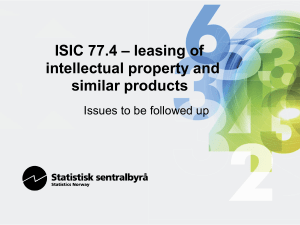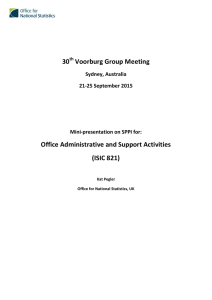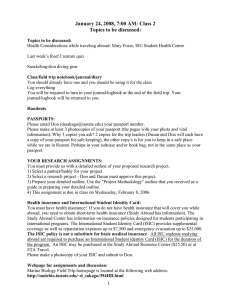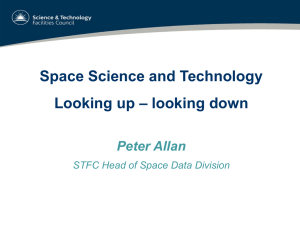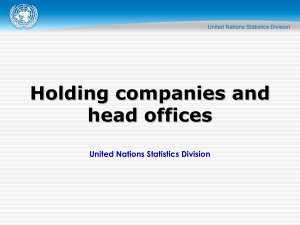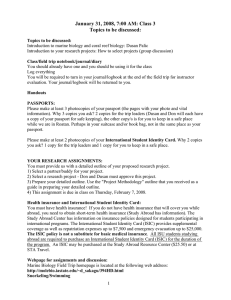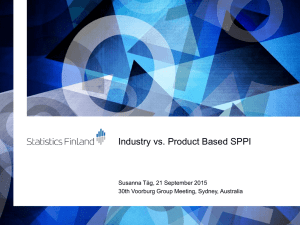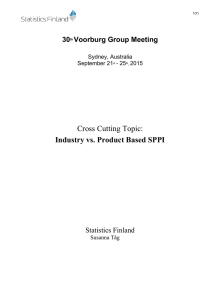30th VOORBURG GROUP Meeting Sydney, Australia 21-25 September 2014
advertisement
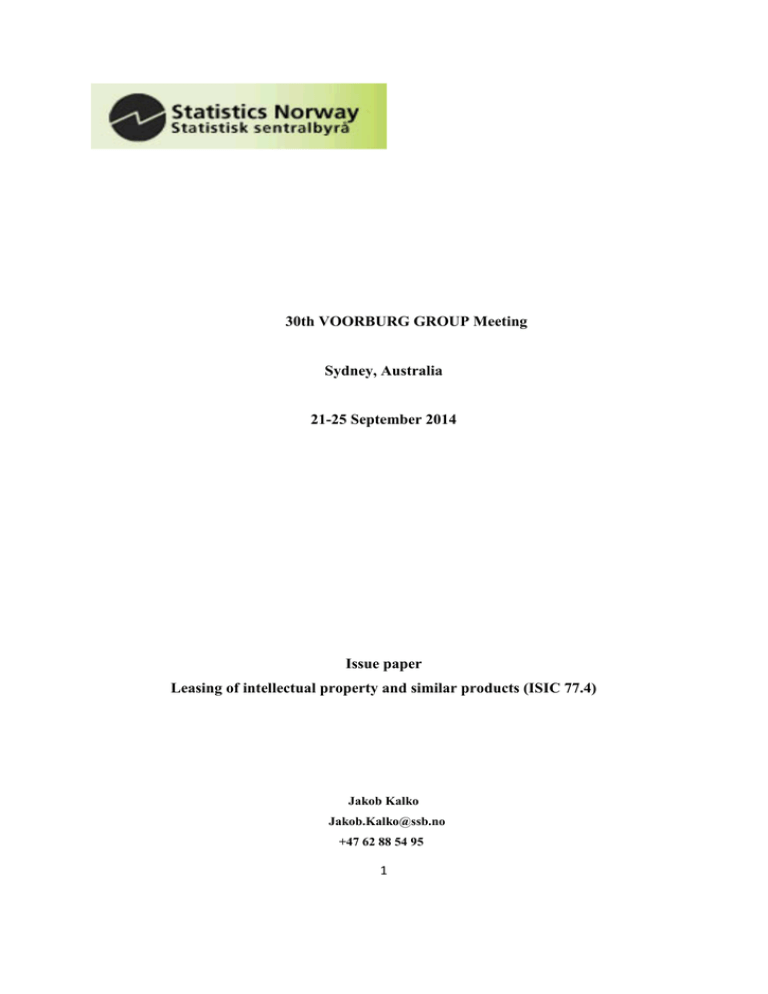
30th VOORBURG GROUP Meeting Sydney, Australia 21-25 September 2014 Issue paper Leasing of intellectual property and similar products (ISIC 77.4) Jakob Kalko Jakob.Kalko@ssb.no +47 62 88 54 95 1 1. Introduction In 2014 the Voorburg group had a session covering ISIC 774 – leasing of intellectual property and similar products. The session included mini papers concerning output (Norway, The Netherlands, Poland and SPPIs (France, Hungary). The presentations left a number of issues on both output and SPPI, which was not clarified. Especially on within SPPIs the experience was in addition very limited. It was therefore decided that more analysis and experience among member countries were needed before a sector paper can be prepared. The issue paper outlines the main challenges to be resolved before a sector paper can be produced in the future. This will probably take some years, due very limited experiences within SPPI’s 2. Definition of Service provided The transactions taking place within ISIC 774, does not change the ownership of the intellectual property/asset. The transactions allow the receiver to use intellectual property products and similar products, for which a royalty payment or a licensing fee is paid to the asset holder. The leasing can take place in different forms, such as permission for reproduction, use in in subsequent processes or products, operating businesses under a franchise etc. If the transaction changes the ownership of the asset, the activity does not belong to ISIC 774. The French paper pointed out some borderline cases Patent acquisition is not part of the activity. A patent acquisition is the result of activities performed within Research and development. It gives the owner of the patent the possibility to conduct transactions within ISIC 774 – through grant of licenses. Patent trolls – primary activity is to exploit acquired patents financially, not industrially. If the major part of their income consists from royalties, which they successfully achieve from third parties (the alternative is a trial), the activity nevertheless belongs to ISIC 774. Other questions were raised during the discussion, concerning the service measured. It was identified industries, to which leasing of intellectual was directed towards. Retail trade, Hotels, Industrial groups (with significant R&D activities), but the picture may differ from country to country. The Software-industry was discussed –some part being protected by copy-rights, but others having the potential of ISIC 774 activities through patents. More 2 analysis must to be done to, to distinguish between the two ”types” of software in order to locate possible transactions within ISIC 774. Revenues for naming rights – is this a part of the industry? It is not mentioned explicitly in CPA 2008 for NACE 774, but actually mentioned as an activity within 73.12 – media representation services. It is similar to other leased rights - the right does not change ownership (it has a time limit). This right can also by used other parties in the future Revenues for broadcasting rights – where does this belong ?. If a party buy the right for one big sports event (eg. Soccer World cup, Olympic Games), the right for this event does change ownership. This right cannot be used by other parties in the future. It exists as long the product (the event) exists. Does this change if rights are bought for a 4 year period, (showing American football for four seasons)? This right has a time limit – and can be transferred by the owner to another party after the end of the contract. It may be argued that the product for the season 2008-2012 is not the same product as for 2012-2016 – and that the product therefore is unique. Is it the same right is leased – or is it a different right bought? 3. Issues concerning output Data concerning output/turnover was collected from surveys, the VAT register or a combination. All presenters indicated mentioned that the level of activity most like likely is significant larger than real output published for this industry at enterprise or establishment level. Main explanation is that leasing of intellectual property is probably not the primary activity of the enterprises and/or the establishment’s , which are located within other industries. A survey at product level is needed, to get a real picture of the level of output. For making a reliable survey, industries where ISIC 774 is a secondary activity should be identified. The French paper pointed out some areas where the franchise concept is used (Lacoste, Peugeot, Spar, B & B hotels), showing that this activity is present in different industries. This might be different from country to country – each country having its own market mechanisms and structure. If royalties/licenses are a separate post in the account of the enterprises and NSO’s have access to this information, it could be possible to get a proxy of the output. Intermediary consumption can be assumed to be almost zero for the service itself. As mentioned in paragraph 1, activities in connection with the acquisition of e.g. a patent (R&D activities, ISIC 72), is not a part of the activity within ISIC 774. The intermediary consumption in this case will take place within ISIC 72. Output from B2E was mentioned as being significant in some countries. 3 4. Issues concerning prices Experiences within prices were very limited (only two countries), which in itself is an issue! The French SPPI distinguished between B2B and B2E, as B2E have a significant impact. The total index is based on the activities licensing services for the right to use R&D and “Licensing services for the right to use trademarks and franchises. The Hungarian paper pointed out that the market is dominated by activities related to Licensing services for franchising. A number of issues were raised during the discussion – and will have to be considered further. Franchising The total price consists of two components: Fixed entrance fee+ commission fee It is needed to distinguish between different industries which the franchisor operates. How should franchisors be further broken down towards an elementary level? Location, size of store/hotel, opening hours, others ? How should the commission fee be adjusted? By collecting 1)sales revenue 2) Use Retail CPI as proxy or 3) average retail sale of similar stores. The commission fee should (from the producer perspective) reflect development in revenue. Does that exclude retail CPI as a first option? Fixed entrance and commission fee reflects two different franchise agreements. Entrance fee reflects the price to enter into a new franchise, whereas the transaction in connection with the commission fee is reflects changes for ongoing franchise. How should weights be measured for each transaction? Patents Fixed fee method – is every patent unique or are there comparable patents over time ? How should the lifetime of a patent be followed, in order to be substituted in right time by a patent showing a more representative price development ? In general: Is CPI for patented products a good proxy for a SPPI within ISIC 774? Transactions in the industry are B2B ( and include some degree of export as well) Could SPPIs from other industries within ISIC 77 be used as a proxy? 4 5
